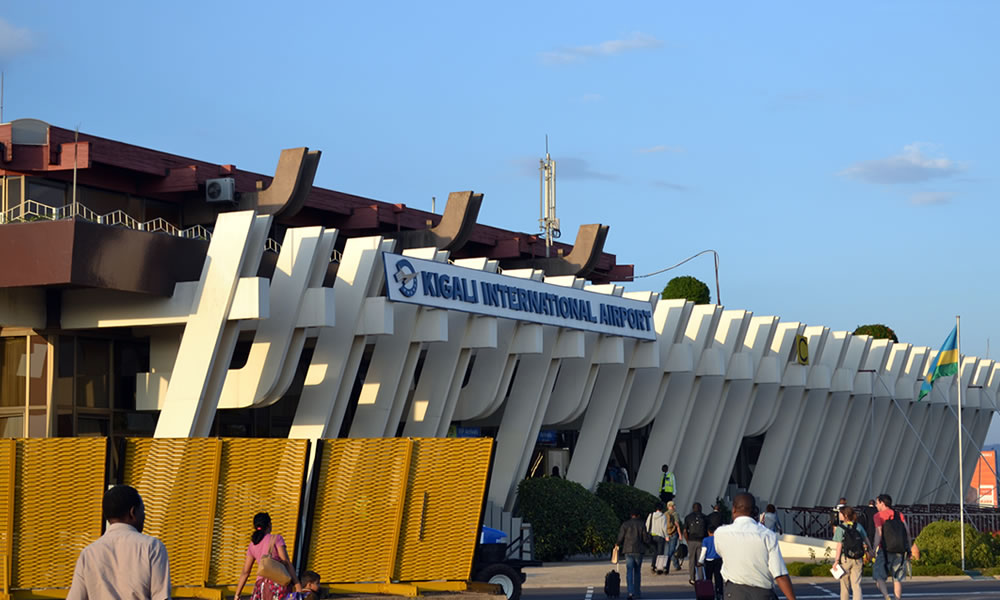Kigali International Airport

Kigali International Airport (KGL), officially known as Kigali International Airport – Kanombe, serves as Rwanda’s primary aviation hub and the main gateway to the Land of a Thousand Hills. Located approximately 10 kilometers east of Kigali city center in the Kanombe suburb, this modern facility has transformed into one of East Africa’s most important transportation hubs, connecting Rwanda to destinations across Africa, Europe, Asia, and the Middle East.
History and Development
Originally constructed during the colonial period, Kigali International Airport has undergone significant modernization and expansion over the past two decades. The airport’s transformation accelerated following Rwanda’s remarkable post-genocide recovery, with substantial investments in infrastructure development supporting the country’s vision of becoming a regional aviation hub. The facility was extensively renovated and expanded in the early 2000s, with continuous improvements made to accommodate growing passenger traffic and larger aircraft.
The airport’s strategic location in the heart of East Africa positions it as an ideal connecting point for travelers moving between different regions of the continent. This geographical advantage, combined with Rwanda’s political stability and business-friendly environment, has attracted major international airlines to establish operations at KGL, making it a crucial player in regional aviation connectivity.
Terminal Facilities and Infrastructure
Kigali International Airport features a modern terminal building designed to handle both domestic and international flights efficiently. The terminal spans multiple levels and incorporates contemporary architectural elements that reflect Rwanda’s cultural heritage while meeting international aviation standards. The facility includes spacious departure and arrival halls, comfortable seating areas, and modern amenities designed to enhance the passenger experience.
The airport’s infrastructure includes a single runway capable of accommodating wide-body aircraft, including Boeing 777s and Airbus A330s. Ground handling facilities, cargo terminals, and aircraft maintenance capabilities support both passenger and freight operations. The terminal building houses numerous check-in counters, immigration and customs facilities, security screening areas, and baggage handling systems that meet international security and safety standards.
Passenger amenities at Kigali International Airport include duty-free shopping outlets, restaurants serving local and international cuisine, currency exchange services, ATMs, and free Wi-Fi throughout the terminal. Business travelers can access executive lounges, while families benefit from dedicated facilities and services. The airport also provides medical services, lost and found assistance, and special needs support for passengers with disabilities.
Airlines and Destinations
Kigali International Airport serves as a hub for RwandAir, the country’s national carrier, which operates flights to numerous destinations across Africa, Europe, and Asia. Major international airlines serving KGL include Ethiopian Airlines, Kenya Airways, Turkish Airlines, Brussels Airlines, KLM Royal Dutch Airlines, and Qatar Airways, among others. These carriers provide connectivity to major global destinations including London, Paris, Amsterdam, Istanbul, Doha, Dubai, and numerous African cities.
The airport handles both scheduled passenger services and charter flights, with cargo operations supporting Rwanda’s import and export activities. Regional connections link Kigali to neighboring countries including Uganda, Tanzania, Kenya, Democratic Republic of Congo, and Burundi. Long-haul routes connect Rwanda directly to Europe, the Middle East, and Asia, eliminating the need for multiple connections when traveling to these regions.
RwandAir’s hub operations at KGL have been instrumental in positioning the airport as a regional gateway. The airline’s strategic route network and modern fleet contribute significantly to the airport’s growing passenger numbers and enhanced connectivity options for travelers throughout East and Central Africa.
Transportation and Airport Access
Getting to and from Kigali International Airport is convenient through various transportation options. The airport is well-connected to Kigali city center via a modern road network, with the journey typically taking 15-20 minutes depending on traffic conditions. Taxi services are readily available, with both traditional taxis and ride-hailing services like Uber operating from the airport.
Many hotels in Kigali provide complimentary shuttle services for their guests, while car rental companies maintain counters at the airport for travelers preferring independent transportation. Public transportation options include buses and motorcycle taxis (known locally as “moto”), though these are less commonly used by international visitors due to luggage considerations.
For those staying in Kigali’s city center, the airport’s proximity makes it easily accessible for both departing passengers and those meeting arrivals. Clear signage in multiple languages, including English, French, and Kinyarwanda, helps navigate the route to and from the airport.
Economic Impact and Strategic Importance
Kigali International Airport plays a crucial role in Rwanda’s economic development strategy, supporting the country’s goals of becoming a middle-income nation and regional business hub. The aviation sector contributes significantly to Rwanda’s GDP through direct employment, tourism revenue, and facilitation of international trade and investment.
The airport supports Rwanda’s vision of transforming into a regional conference and business destination, with convenient air connectivity enabling international corporations, NGOs, and government organizations to establish regional headquarters in Kigali. This strategic positioning has attracted numerous international conferences, business events, and diplomatic meetings to Rwanda.
Tourism benefits significantly from the airport’s operations, as it serves as the primary entry point for visitors to Rwanda’s renowned mountain gorilla sanctuaries, national parks, and cultural attractions. The convenience of direct international flights has made Rwanda more accessible to tourists, contributing to the growth of the hospitality and tourism sectors.
Future Development and Expansion Plans
Kigali International Airport continues to evolve with ongoing and planned infrastructure improvements designed to accommodate projected growth in passenger traffic and cargo volumes. Expansion plans include terminal enhancements, additional gates, improved passenger processing facilities, and upgraded ground handling capabilities.
The development of a new airport, tentatively called Bugesera International Airport, is planned as a larger facility that will eventually become Rwanda’s primary international gateway. However, Kigali International Airport will continue to play an important role in Rwanda’s aviation landscape, potentially focusing on regional connectivity and specialized services.
Sustainability initiatives are being incorporated into future development plans, reflecting Rwanda’s commitment to environmental conservation and green development practices. These include energy-efficient systems, waste management improvements, and sustainable transportation options.
Kigali International Airport stands as a testament to Rwanda’s remarkable transformation and ambitious development goals. From its strategic location and modern facilities to its growing network of international connections, KGL continues to strengthen its position as East Africa’s emerging aviation hub. The airport’s contribution to Rwanda’s economic growth, tourism development, and regional connectivity makes it an essential infrastructure asset supporting the country’s vision for sustained prosperity and regional leadership in aviation excellence.



